The fit, articulate, well-educated 31-year-old from Tasmania is a refreshing new breed of fighter, shaking MMA’s bad-boy image and bringing this lesser-known sport into the mainstream.
List all the stereotypes you can think of when it comes to cage fighting and mixed martial arts competitors.
Maybe you think they’re menacing, lawless, barbaric thugs, who are uneducated and covered in tattoos? Maybe you consider them to be largely unskilled and untrained, with a focus on violence rather than sporting prowess? Or maybe you expect them to be irresponsible foul-mouthed trash-talkers indulging in an “anything goes” bloodsport?
Now grab a giant Thor-style hammer and shatter those stereotypes into tiny pieces. Because that’s exactly what Tasmania’s Rob “Razor” Wilkinson, the reigning Professional Fighters League (PFL) light-heavyweight champion, has helped do for the sport of MMA.

The fit, articulate, well-educated 31-year-old is a refreshing new breed of fighter, shaking MMA’s bad-boy image and bringing this lesser-known sport into the mainstream.
Wilkinson became a household name in November, making headlines when he achieved his long-held goal of winning a MMA world title after defeating Russian Omari Akhmedov, in New York, and picking up a cool $1m USD (around $1.5m AUD) in prizemoney.
Wilkinson first dreamt of competing in MMA and winning a world title when he was just a teenager completing year 11 and 12 at The Friends’ School in Hobart.

The qualified personal trainer still remembers the horror on people’s faces when he told them about his unusual career aspirations. But he says it is great to see those reactions are slowly changing.
“Back then, no one really knew what MMA was,’’ Wilkinson recalls.
“They’d think it was kind of barbaric and no rules, all that sort of stuff. With most people I’d have to explain what I did, and then you’d see most people’s faces, the shock and horror, about what I liked doing. But it’s definitely much more recognised as a sport now. And I think people can see the skill involved and the respect that fighters have for each other.
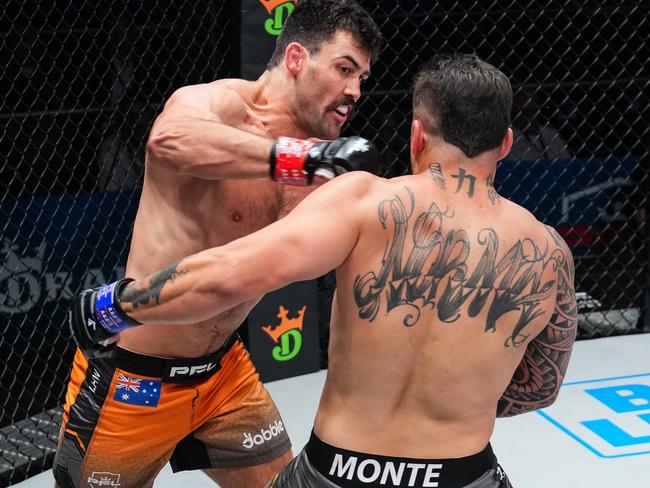
“There are those tough guys that might not be super nice, those stereotypical fighters, but they’re not the majority. It’s a martial art at the end of the day, you learn a lot about respect.’’
The sport began in 1993, with the intention of bringing together a range of different martial artists to compete against each other to see which martial art was the best.
“That’s what it is, training in all aspects to see who is the better fighter, the better martial artist,’’ Wilkinson says.
He says people are often surprised when they meet him and realise he’s not what they imagined a typical MMA fighter to be.
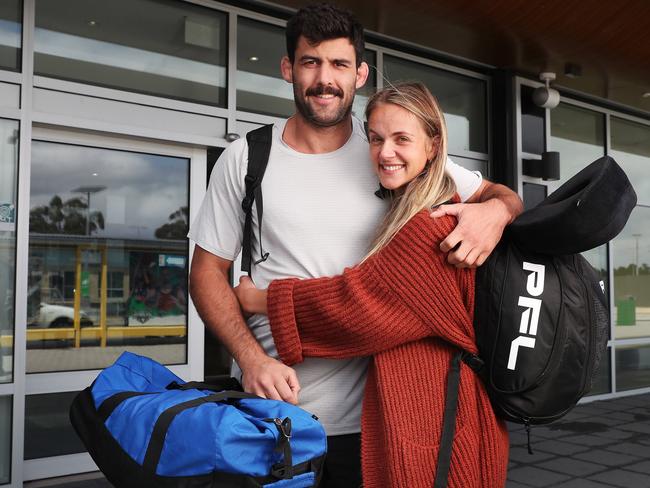
Wilkinson considers himself an everyday guy with a big dream. He’s keen to dominate the four major international MMA promotions in the world – the Professional Fighters League (PFL), Ultimate Fighting Championship (UFC), Bellator MMA and One Championship – in his bid to be recognised as the best light-heavyweight on the planet.
“There are four major promotions in the world, and I’m champion of one of them. I want to be recognised as the best fighter in every organisation there is, that’s my goal now to keep winning and dominating until I get to that point,’’ he says.
“I don’t necessarily want to be champion of all four, I just want to be considered the best light-heavyweight fighter in the world, regardless of which promotion I’m in.’’

It won’t be an easy journey – Wilkinson is currently ranked about 20th in the world and will face plenty of tough competition – but it’s one he’s approaching with gusto.
Wilkinson will start by defending his crown in Las Vegas on April 1, when he’ll compete against experienced Brazilian Thiago Santos when the 2023 PFL season gets under way.
The bright lights of Sin City are a world away from Wilkinson’s Tasmanian childhood, where he remembers wrestling his older brother James in the loungeroom of their family home at Taroona while watching WWE wrestlers on TV.

“My whole family played a lot of sport,’’ Wilkinson recalls.
“I always played school sport … I played soccer when I was quite young, I also played club football for a year with North Hobart – under-16s I think – and when I was quite young, maybe in grade four, I started getting into rock climbing.
“I was very into it, I used to compete in state and national rock-climbing championships, and I’d usually place in the top three.
“I actually qualified for the Australian youth team, to go to worlds. Then I had a stress fracture in my leg, a broken leg, and wasn’t able to go, so I had a break and never got back into it, I think I was about 14.
After some time off, Wilkinson looked for other sports to pursue.
“I was very interested in fighting,’’ he explains.
“I used to watch WWE as a kid a lot, not that it’s actual fighting, but me and my brother, who was two years older than me, used to wrestle while watching that. We used to wrestle all the time, just learning all the different moves and submissions.’’
His mum encouraged him to visit a gym to hone his skills.
“I always wanted to fight and I had a boxing bag at home that I used to beat up,’’ Wilkinson laughs.
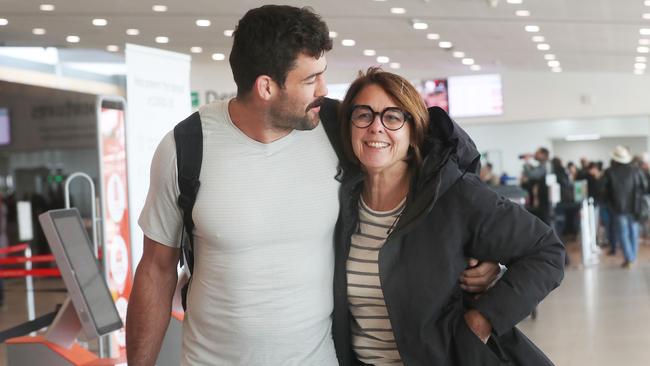
“Eventually Mum told me about a beginners’ course at the PCYC in Hobart; I stayed with boxing training for about nine months and I had two exhibition fights, with someone else from the gym. And then I started watching MMA on YouTube. I was at a party one night, and I heard someone saying that they trained (in MMA), and I didn’t know there was somewhere to train in Hobart.’’
That party conversation led him to train with Priscus Fogagnolo in what was then known as the “chicken coop”, a small caged area at the back of Cazaly’s Fitness in Bathurst St, in Hobart.

Then a black belt in judo, and a brown belt in jiu jitsu, Fogagnolo offered a wealth of knowledge and skill to a bright-eyed 17-year-old with a passion for fitness and mixed martial arts.
“I just loved it,’’ Wilkinson enthuses of that time, while also crediting Fogagnolo for instilling such a strong work ethic in him.
“We used to do a lot of grappling. I picked it up quickly, because I used to do it so much with my brother. It was an individual sport, like rock-climbing, there was no one else to blame, and I loved that idea, it was just you and the other person competing. Straight away I knew ‘this is what I wanted to do’. I was going to be a world champion at MMA, I knew I was going to dedicate my life to this.’’

While not the career path his teachers probably had in mind for him – Wilkinson says at that time students weren’t allowed to play Aussie rules football at the Quaker school because it was deemed too rough – Wilkinson was steely in his determination. He completed his Certificate III in fitness in year 12, followed by his Certificate IV so he could become a personal trainer while also continuing his own MMA training.
Fogagnolo promised Wilkinson he could have his first fight when he turned 18, but he nursed a shoulder injury for most of that year. He continued to train, doing deliveries for Crust Pizza in the evenings, before finally landing his first fight at 19.
“Back then there weren’t too many amateur fights, so I was kind of thrown straight into the deep end,’’ Wilkinson says.

He felt pressure from his family to go to university and follow a more traditional career path – Wilkinson’s dad and sister are both doctors and his mum and brother are both physiotherapists – but he worried that further study would distract from his goal to be a professional sportsperson.
“They were definitely kind of pushing me to go to uni,’’ he says.
“But with fighting, I want to give it my all. It’s not something you can only give half effort to. I knew if I was going to uni and studying as well, it would take a lot away from my training.’’
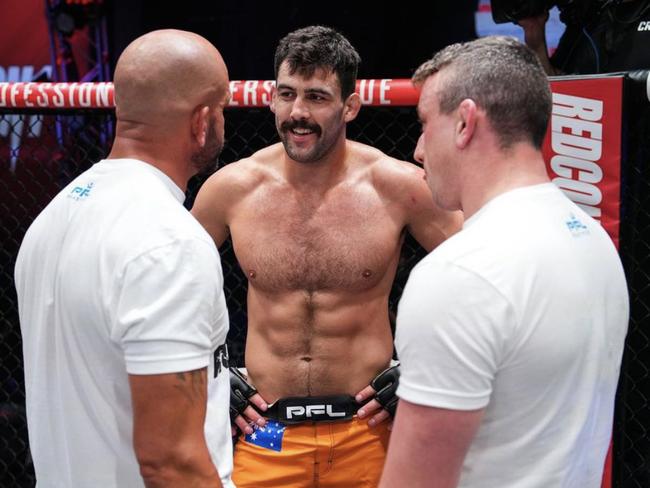
In 2016 Wilkinson moved to Sydney, continuing to train and fight, and soon after that the UFC came knocking.
“That was my dream, to fight for the UFC,’’ explains Wilkinson, who was already middleweight champion in the Australian Fighting Championship.
“That was the biggest promotion in world, I thought ‘finally I’ll start making money, I’m not going to be poor, I’m not going to have to worry’. Until then I was always just doing enough coaching or PT sessions to get by because I didn’t want to take away from my training. I was on and off Centrelink a couple of times.
“You can fight professionally in Australia but you’re not making much money of it until you make it to one of the big international leagues, like UFC or PFL. The most I’d been paid for a fight (in Australia) might have been $3000.’’
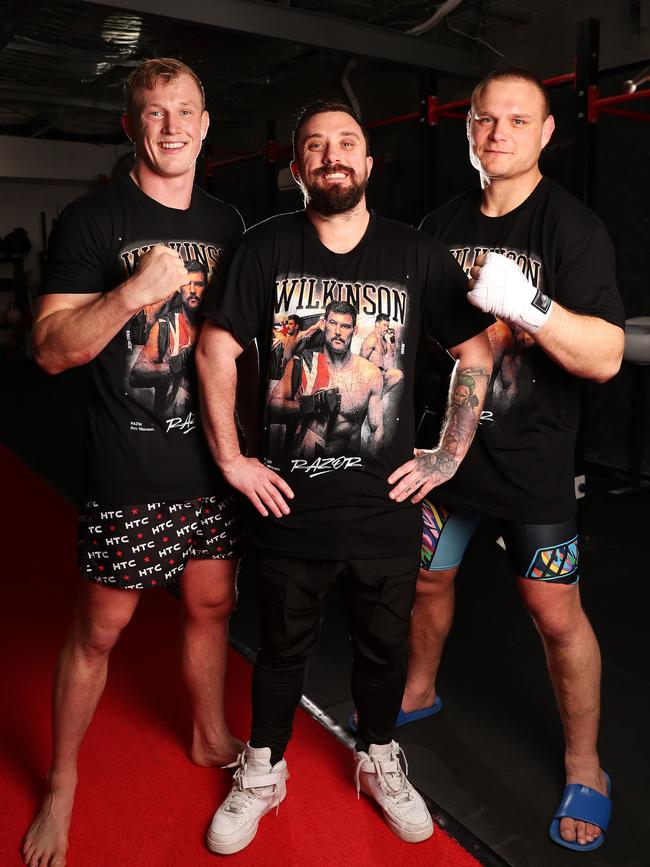
So when he got approached to fight with the UFC he grabbed the opportunity, although things didn’t go the way he planned.
“It was short notice, the fight was in four weeks in The Netherlands and I was just coming off knee surgery so I hadn’t trained properly in three months,’’ Wilkinson recalls.
“I was a little bit too excited, too eager, and 25-year-old me jumped on that opportunity. But a few things didn’t go my way.
He lost that first fight, against Dutch competitor Siyar Bahadurzada.
“That night I didn’t perform to my best and I got knocked out in second round,’’ Wilkinson recalls.
“It was devastating to deal with. But with the UFC you sign a four-fight contract so I knew I’d have another opportunity.’’
That next fight happened six months later, when he took on New Zealand’s Israel Adesanya in Perth, Western Australian, but again Wilkinson was knocked out in the second round.
He was also released from the UFC after those two consecutive losses, leaving his dream of becoming a world champion fighter in tatters.
“I learnt a lot from that loss, I wasn’t in a very good head space,’’ Wilkinson explains.
“I’d had depression on and off for most of my adult life and I was at a pretty low point. Even fighting in the UFC, which had been my goal since I was 17, I was fighting in the UFC but I didn’t actually really want to be fighting, I didn’t want to be training, I didn’t like watching fights anymore. I wasn’t enjoying it.’’

He moved back to Tasmania to be close to his “very good close circle of friends and family” and “took a step back from fighting for a little bit”.
“I wasn’t sure what to do after getting released, after that being such big goal,’’ Wilkinson says.
“So I took a step back, I wasn’t planning on fighting any time soon.’’
He started training again, at Hobart’s Hybrid Training Centre (HTC), but less frequently. And it was then, once that pressure eased, that he rediscovered his love for MMA.
“I started really enjoying it again, I started looking forward to training, to pushing myself hard, and I decided I couldn’t quit after two losses and throw in the towel,’’ Wilkinson says.
While he felt his wrestling and grappling was strong, his striking wasn’t up to scratch so he turned his focus to kickboxing and ended up taking on – and winning – three kickboxing fights.
He also had a couple of MMA fights. But when Covid hit and borders closed, Wilkinson found it difficult to find opponents.
So Australia’s No.1-ranked light-heavyweight MMA athlete, with a host of Australian combat sport titles under his belt, accepted a boxing fight – making his professional boxing debut against retiring Hobart boxing champion and former Australian champion Jayden “Plugger” Joseph. Wilkinson won that bout, earning himself the title of Tasmanian heavyweight boxing champion.
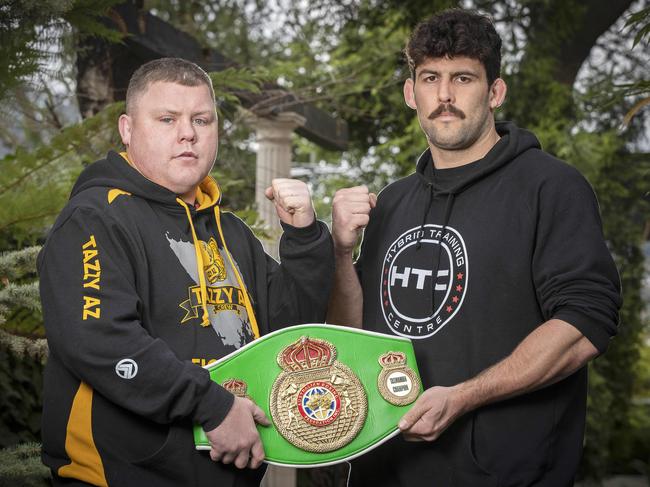
Even when fights were scarce, Wilkinson says he never lost motivation.
He was once invited to train with Eugene Bareman, the coach of Israel Adesanya – the fighter who knocked Wilkinson out in the UFC which led to his release from the franchise. Bareman told him that Adesanya had turned down invitations to join the UFC for a few years, because he was waiting to be ready so he could go straight to the top. That stuck in Wilkinson’s mind and he realised that even without regular fights, he could still work towards his long-held dream of being world champion.
“I was just preparing to be the best fighter in world,’’ he says.
“And when I got that opportunity I would take it – I knew I’d get an opportunity, as long as I kept winning, because I was still young. So I just kept training to be best fighter in the world.’’
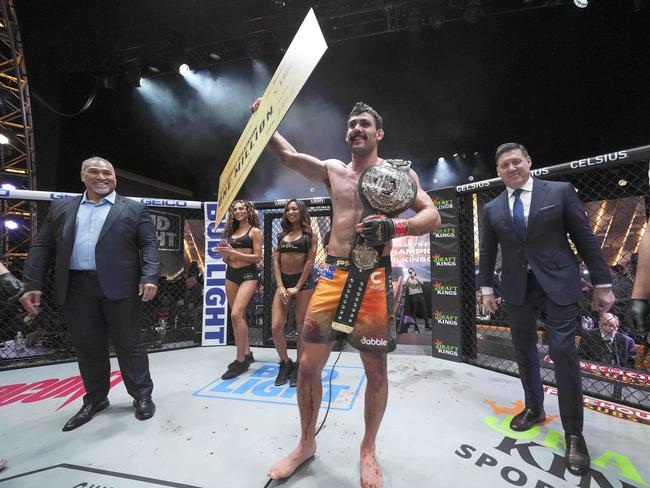
Soon after he signed with the PFL and the rest is history.
Wilkinson celebrated with family and friends in New York after last year’s world championship win before enjoying a holiday in Mexico with his Tasmanian partner Paris Baker (who is based in Hobart but is able to work remotely so spends about half the year living overseas with Wilkinson).
They then returned to Tasmania.

“About 25 or 30 people flew over to New York from Tasmania to support me (and watch the fight),’’ Wilkinson says.
“One of my favourite things after the win, was looking at the crowd and seeing my mum, and my brother and my girlfriend in the crowd celebrating.’’
“It has been really nice to have all that support from Tassie, and from friends, and even from people I don’t know, just reaching out and saying I inspire them. It’s great for young kids – just because you’re from Tassie doesn’t mean we can’t go and do these big things.’’

He says another great thing about winning was seeing videos of his close friends and how they reacted to the win.
“I’m getting emotional just talking about,’’ Wilkinson says, with an obvious quiver in his voice.
“So many people cried … it was really nice.’’
He plans to use his prize money to invest in real estate in Hobart.
He’s currently in America, at a training camp in Denver Colorado, where he’s based himself for the last couple of years, when he’s not at home in Tasmania.
When we chat it’s his birthday in Australia – still birthday eve in the US due to the 18-hour time difference – and I ask him how he’s planning to celebrate.
“Nothing really … I might treat myself to something a little bit tastier for dinner,’’ he confesses.
“I’ve been eating pretty healthy, I’ll probably just have steak and roast vegies, and probably dessert, maybe a chocolate cookie.’’
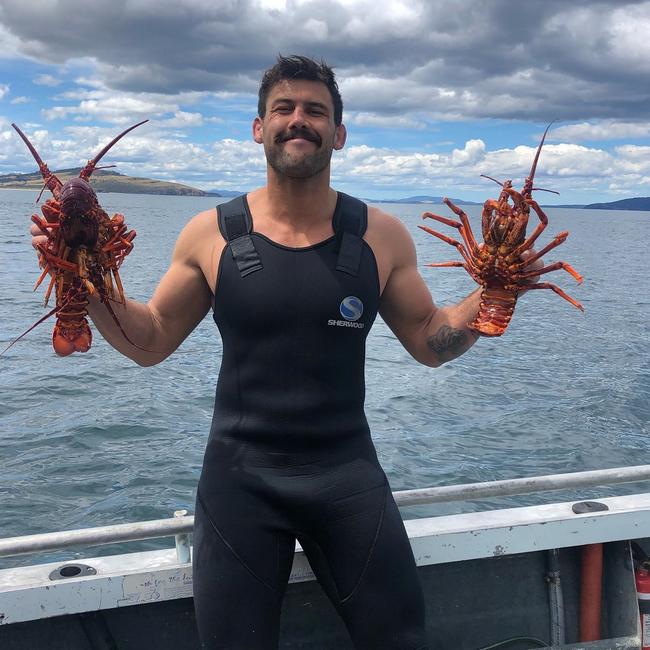
Wilkinson says although it was devastating being released from the UFC back in 2018 it was ultimately for the best as it made him step things up, not just with his training but also with “diet and my nutrition, my headspace and recovery as well”.
He’s contracted to the PFL for two more years so he’s set his sights on winning the title for three years straight. The PFL format means Wilkinson, along with nine other fighters, will have two fights each [in April and June], with the four best performers moving on to the semi-finals in August followed by the championship fight in November.
As the first fight approaches, Wilkinson is working on his mindfulness.
“I do a lot of mindset work, I try and mediate most days and I do a lot of visualisation as well,’’ he explains.

He’s careful to visualise all aspects of a fight – from having his hands wrapped, to the warm-up, to hearing the music playing and walking out into the cage when his name is called as he waits for the ref to say “let’s go”.
He also visualises a fight “that is going really well and I’m winning” to “me potentially losing and being in a bad position, and coming back and getting the win’’.
He says he’s “less nervous and edgy” on fight day if each tiny moment of the day has been carefully visualised in his mind in advance.
He feels like he’s got a lot of energy surrounding himself and feels “almost invincible walking out and getting into that cage’’.
Wilkinson knows there are serious risks involved in such a physical, full-contact sport – especially as his dad and his sister Holly are both doctors – with head injuries, brain damage, spinal cord injuries and broken bones all hazards of the job.

“Dad supports me and he’s very proud of how hard I train and what I’ve done but he doesn’t like watching me fight which is fair enough,’’ says Wilkinson, adding that he monitors his own health very carefully for early warning signs of brain trauma.
He’s still adjusting to his new-found fame as a sporting celebrity and role model but says he’s pleased to be breaking the stereotype.
“Just because we do something that is violent, at the end of the day it is a sport, it doesn’t mean we are animals or anything like that … the majority of fighters are the nicest people you’ll meet,’’ Wilkinson says.
“I love this sport, I love pushing myself as hard as I can to be the best fighter – it’s not about the destination but the journey and I’m loving the journey … I’m very happy with where my life is at the moment.’’ •


Add your comment to this story
To join the conversation, please log in. Don't have an account? Register
Join the conversation, you are commenting as Logout
Ultimate guide to what’s on in Tassie this summer
Summer is coming! Make the most of the warmer weather with our go-to summer events guide – it’s packed with must-do Tassie activities to enliven your social calendar and kickstart 2026 in style
Gus Leighton – on sax – brings Tassie party vibes to the max
Whether he’s firing up a dancefloor, improvising in a jazz quartet or swinging kettlebells like a pro, Tasmanian saxophonist and gym-enthusiast Gus Leighton loves being the life of the party.